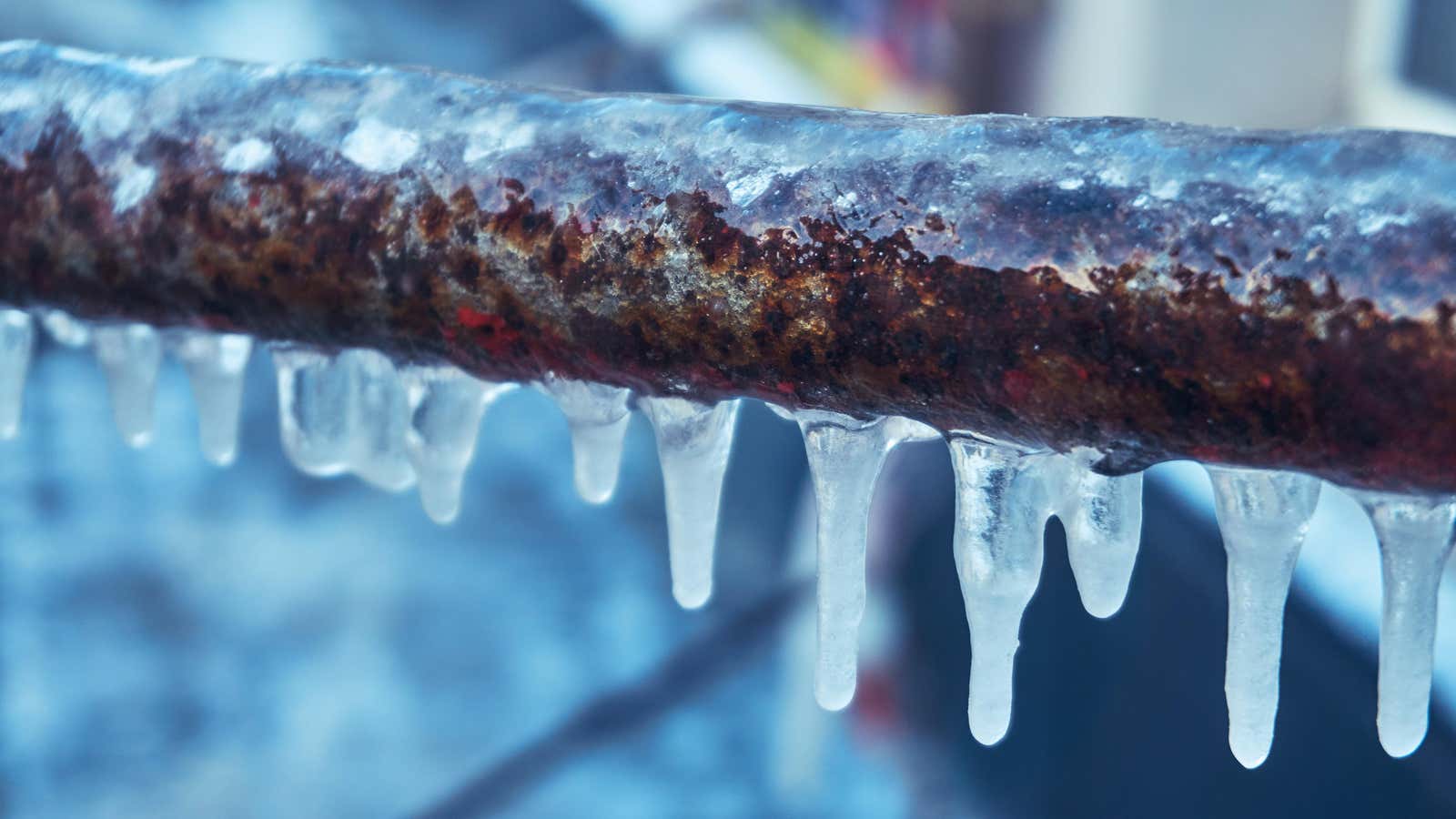How to Prevent Pipes From Freezing (and What to Do If They Freeze Anyway)

When temperatures drop outside, our pipes are at increased risk of freezing, especially in areas with unusual sub-zero temperatures. Identifying and troubleshooting high-risk locations can now save you the trouble of a frozen pipe and, worse, the cost of repairing a burst pipe.
Find vulnerabilities
The first thing to do to keep your pipes from freezing is to look for possible open water pipes. This includes pipes that are outdoors, such as for your garden hose, pipes that are in uninsulated places like underground, and pipes that are on exterior walls that are poorly insulated. Other problem areas are attics, basements and outbuildings. If you find that the pipe is vulnerable to cold, here are some simple steps you can take to prevent freezing.
Turn off outdoor faucets
For outdoor faucets, you can add insulation either with a faucet cap or a piece of foam pipe insulation and tape or tie wrap. In a pinch, a piece of pool noodles will do the trick. Simply cut off a 3-4″ section and slide it over the faucet. Another outdoor faucet prevention measure is to turn off the water inside the house and then dry the outdoor faucet. Draining the pipe leading to outdoor fixtures will help prevent freezing and expansion of water inside the pipes.
Unisolated areas
For plumbing in basements and other non-insulated areas, adding some pipe insulation can help. Anywhere you can get to, adding foam to your water lines will help ensure they work well. You may also want to consider insulating basements, basements, and attics where pipes run through, especially if you live in an area where freezing temperatures are common.
Internal pipes
If a cold snap is expected and you have pipes on an outside wall, you can take extra precautions. First, open cabinets that contain plumbing for sinks and other appliances to keep the plumbing area at the same temperature as the rest of the house. Then open the taps on the trickle so that water flows through them. This will help prevent the formation of ice jams. You can also turn up the temperature by a few degrees to keep the outside walls of your home warmer and colder.
What to do if the pipes are still frozen
If, despite your efforts (or lack thereof), you find that your pipe is frozen, you should fix the problem as soon as possible. Because water expands when it freezes, frozen pipes can burst, leading to water damage and plumbing problems. To defrost a frozen pipe, first find the coldest areas the pipe runs through and then heat the pipe to melt the blockage. To do this, you can wrap the heating pad around the pipe and turn it on at maximum power; A hair dryer or heat gun can also be used to circulate warm air around the frozen area. In cold places under cabinets or in basements, use a space heater to heat the room.
Remember to be careful when applying heat so as not to damage it.
When to Call a Pro
Once your pipes have warmed up and the water is flowing again, it’s important to check them for leaks. Inspect walls, floors, and other places where pipes run for signs of moisture. If you notice any leaks, or if your water isn’t returning to normal after the pipes thaw, it’s time to turn off your home’s water and call a professional. A burst pipe can cause a lot of damage, so it’s important to keep flooding to a minimum.